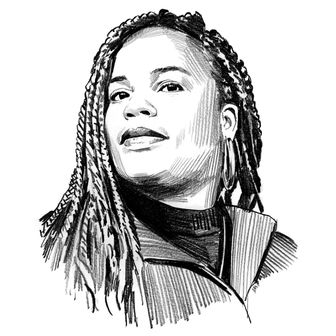
When it comes to dieting the Silicon Valley way, you can forget the touchy-feely purity of a juice cleanse: You’re not trying to change your life on an emotional and spiritual level. Your body is not a temple; it’s a machine, and so improving the body is purely a problem of data and input and output. How can you make it run optimally? What food, or combination of nutrients, goes in to produce the highest cognitive function and the best performance with the least amount of time and effort?
“I spent $300,000 hacking myself,” says Dave Asprey. “It was blood work, cholesterol tests, scans, looking at my diet to figure out why I’d lose 50 pounds and have it come back.”
After fifteen years as his own lab rat, Asprey is the creator of the Bulletproof Diet (which combines Tim Ferris’s Four Hour Body lifestyle with a Paleo-esque diet) and head of the Bulletproof Executive (a lifestyle site/podcast/book that spreads the gospel of biohacking). He also looks, in his own words, “pretty damn good for a 40-year-old who was formerly obese and sleeps five hours a night.”
Really, though, looking good is just a happy byproduct. And while Silicon Valley may sit amid the locavore bounty of Northern California, diet hacking doesn’t have much to do with holistic wellness or the pleasures of organic eating. For Asprey and other Valley denizens looking to disrupt diets, the real focus isn’t weight-loss or well-being. It’s surviving a punishingly work-centric way of life, and figuring out how to apply the ideals that govern their professional world — innovation, optimization, efficiency, quantification — to the human body.
This approach to dieting has existed almost as long as Valley culture itself. The ideas behind bodyhacking and the Quantified Self movement got their start with the SiliconValley Health Institute, which was founded in 1993: Its aim was to look outside of mainstream medicine to find out not just how to treat or prevent illness, but how to optimize the body’s potential. Those ideas have now seeped into the mainstream with the popularity of fitness-tracking devices and diet apps. It’s predicted that the wearable fitness-device market will surpass $1 billion in revenue in 2014.
In Asprey’s case, the diet fix was simple — no counting calories, no insane workouts. Eat mostly healthy fats, some proteins, and the rest in vegetables. Move a little bit. His website outlines power foods: what to eat to boost energy and brain functions, how to get the most out of a workout, and some helpful hacks. For example, he recommends drinking coffee fortified with two tablespoons of grass-fed butter and one tablespoon of triglyceride oil. “Extra oily” might not be a quality most people seek in their coffee — but the fats enhance focus, Asprey says.
The body generally runs best on healthy stuff, but if a diet of purely McDonald’s, versus a diet of straight kale, were proven as the best energy source to fuel an 80-hour workweek, you’d better believe a Valley hacker would write up his experience eating Big Macs for lunch and dinner. Some are even willing to subsist on sludgy brown meal-replacement shakes.
“I wasn’t overweight, really, but I just felt kind of down,” says Soylent creator Rob Reinhart, whose company makes those beige shakes. “I didn’t have a lot of energy and I couldn’t focus on my work as much as I’d like to. I found that I was spending a lot of time and money [on] food and wasn’t eating that well. I thought, maybe I didn’t need to go to the grocery store and cook. Maybe there is something more efficient.”
So he devised Soylent, a starch- and rice-protein-based powder that turns into a beverage containing all the nutrients you need to function. Is living off Soylent particularly enjoyable or sociable? No, but put Soylent in the machine, and the machine works. “I felt great,” Reinhart reports. “I slept better. I had more energy, I had more fun running. I got my blood tested and got objective metrics and by everything I measured, I was great, cognitive tests, memory reaction-time tests have showed an increase as well over traditional foods. Things are better. It’s very noticeable.”
Meanwhile, entrepreneur Julie Fredrickson has found a way to navigate the social side of Silicon Valley life. She’s the founder of the Minimum Viable Fitness plan, a program whose name echoes the tech-industry notion of “Minimum Viable Product” — the marketing strategy of seeking responses to a bare-bones prototype. Frederickson’s sixteen-week program consists of three 45-minute workouts a week, focusing on weight-lifting rather than inefficient cardio. It also includes one-on-one virtual coaching, an app, and eating plans that deal with the sexy side of start-ups: happy hours, all-nighters, and jet-setting. She confronts the boozy nature of the start-up industry with some work-arounds for cocktail parties (“No mixers. Hard alcohol only. If you can get into rum and Diet Coke, it’s actually pretty good for you”).
Aside from tech geeks themselves, who makes up the market for these diet hacks? Among the people who have signed up for Soylent pre-orders, Reinhart says he sees a fair share of single moms, along with doomsday preppers and truck-drivers. Asprey touts the broad appeal of efficient eating, too — although he does so in terms that might raise eyebrows, especially for anyone primed to expect tech-world misogyny.
“That’s what the Valley wants, and what a soccer mom wants,” says Asprey of his approach. “Venture capitalists have secretaries too, and they need more energy than anyone else. Helping moms be better moms with more brain energy and more focus is not a bad way to help the world.” (One can only imagine how much brain energy female CEOs might require.)
Frederickson says that MVF started with a largely male following, and that women have “more bad habits to let go of” — for example, the tendency to think emotionally about eating and punish themselves for diet slips. By diet-hacking logic, there’s no reason to feel bad about yourself if you wolf down a pizza once in a while: As long as the numbers still work out, you’re fine. Fortunately, Frederickson has some hacks for dodging food-related feelings, like asking clients to close their eyes when they step on a scale, or to weigh themselves after a night of heavy drinking when dehydration causes (reassuring) false weight-loss. It creates mental security, she says. Overall, she calls her program “a distinctly masculine approach.”
But ditching the emotional side of eating is about more than tech-bro machismo; it’s also about stripping away the social and cultural baggage associated with food. To hear the diet hackers tell it, their way of eating is more than common sense. It’s liberation.
“There’s no good or bad,” says Frederickson. “There’s just what’s going to get in the way of you and your goals. A piece of pizza can be a totally healthy thing to eat if it’s what you need, nutritionally and mentally. Leave the moralizing to someone else.”


